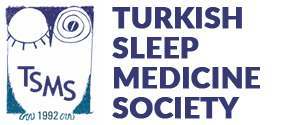European Sleep Research Society has created the standard criteria for the accreditation of sleep centers and the application form with active participation of Turkish Sleep Medicine Society.
Index:
- Accreditation process and purpose
- Personnel, physical conditions, equipment,
- Criteria for filling to Accreditation Questionnaire,
- Center visit criteria
- Framework of the accreditation report,
- Response to the accreditation report
- Re-evaluation of centers,
- Notification of any changes on Conditions of Centers
References
Accreditation process and purposeIs guaranteeing, improving the patient care in Sleep Disorders Centers and providing standardization in the centers located in the country and in Europe.
Accreditation primarily includes the assessment of personnel and physical conditions.
Accreditation is consisted of 2 stages:
- To fill the application form for accreditation:
Visit to Sleep Disorders Center
Accreditation starts when the enclosed form is filled out completely by the Physician in Charge of Sleep Disorders Center. The second stage is visiting to Center. The second stage; Center Visit is made by the Accreditation Committee - which is consisted of 3 experts who were previously assigned by Turkish Sleep Medicine Society-.TSMS Accreditation Committee is consisted of TSMS member academicians who are at least associate professors and previously managed to a sleep disorder center for at least 5 years by the time of the creation of the Committee.Center visit is made by at least 3 experts who are members of TSMS Accreditation Committee. Center executives have right to notify the members that they do not want. Also the members are entitled to renounce the visit provided that they specify the reason. This paragraph aims to not to effect accreditation process due to conflicts of interest arising from various reasons. Sleep Disorders Center visit is paid and the fee includes travel and accommodation expenses of three experts and it is around 1000 $ equivalent YTL. Fee is paid to TSMS prior to the visit. Therefore it is avoided to establish any financial relationship between the visiting committee members and the center’s executives.
Personnel, physical conditions, equipment
Accredited Sleep Disorders Center must have trained personnel and equipment that can diagnose all sleep disorders contained in the International Classification of Sleep Disorders Center. Center is not obligated to treat all these diseases. This paragraph means that; diagnosis of sleep disorders is a whole and it is not acceptable if some sleep disorders can be diagnosed in an accredited center while some others can’t be diagnosed. Sleep Disorder Center may have equipment which is able to diagnose with limited parameters. However, this equipment can’t be shown in the basic equipment during the accreditation and the rooms where these equipments are used are not included in the capacity of an accredited center.Physician in Charge
The physician in charge may have expertise in any field. However, this physician must be able to prove that he is trained in the field of sleep disorders. Training Certificate is awarded based on the criteria determined by TSMS. Physician in Charge must be a member of TSMS. Physician in Charge can not be responsible for more than one Sleep Disorders Center at the same time. Physician in Charge is not obliged to be always present at the sleep disorders center. However, he is required to be accessible considering the emergency situations may occur.Technical Personnel
Technical personnelare the persons who records sleep disorders in the center and they must be trained and informed on the following subjects.- Night diagnostic and treatment methods
- Polysomnographic measuring methods
Daytime operations
Ambulatory recording methodsNight technologists must ensure proper and artifact free recording of the records.
They should be able to fix the problems which may arise at nights.
They should be able to notice emergency situations and notify these situations to physician.
The above functions oblige them to be at patient’s bedside all night.
Night technologists can not be responsible for more than 4 patients at the same time.
If night technologists follow nocturnal ventilation or titration; they can not be responsible for more than 2 nocturnal ventilation patients at the same time.
Technologists should be knowledgeable about the diseases in the international classification of sleep disorder, they should be certified in this field in the country, if any.
Executive Secretary
There must be a secretary who constantly remains at the center during the day. Secretary must have necessary information for giving appointments, providing guidance, organizing to files.Polysomnography Rooms
Each room must have a single bed.Polysomnography devices connected to room should be capable of recording all the necessary parameters for diagnosis and treatment.
Bedrooms should be capable to ensure professional diagnosis and treatment of sleep disorders.
Daytime sleepiness must be analyzable in the same room.
Size can be arranged according to the local conditions. Preferably should be smaller than 12 m2.
Light and sound control must be available.
Ventilation should be available.
Heat should be adjustable.
The room should be able to be darkened for daytime tests.
There must be adequate sanitary conditions in the center.
Continuous video monitoring should be provided.
Two-way communication system which enables mutual communication between technologist and patient must be provided.
Monitoring room
A separate room which allows night personnel to work comfortably must be available. Bedside polysomnograph is not recommended.Polysomnography
It refers simultaneous recordings of neurophysiological, cardio - respiratory and other biological signals during all night sleep period. Minimum PSG Assembly should include the following parameters.
3 EEG
2 EOG
1 Chin EMG
Snoring signal
Body position sensor
Oro-nasal airflow
Registration of respiratory efforts
2 tibial (leg) EMG
ECG
Oxygen saturation recording
Video recording and monitoring
The record can be used in paper or digitally in polysomniography. When digital recording is performed: devices must allow seeing the previous period.

